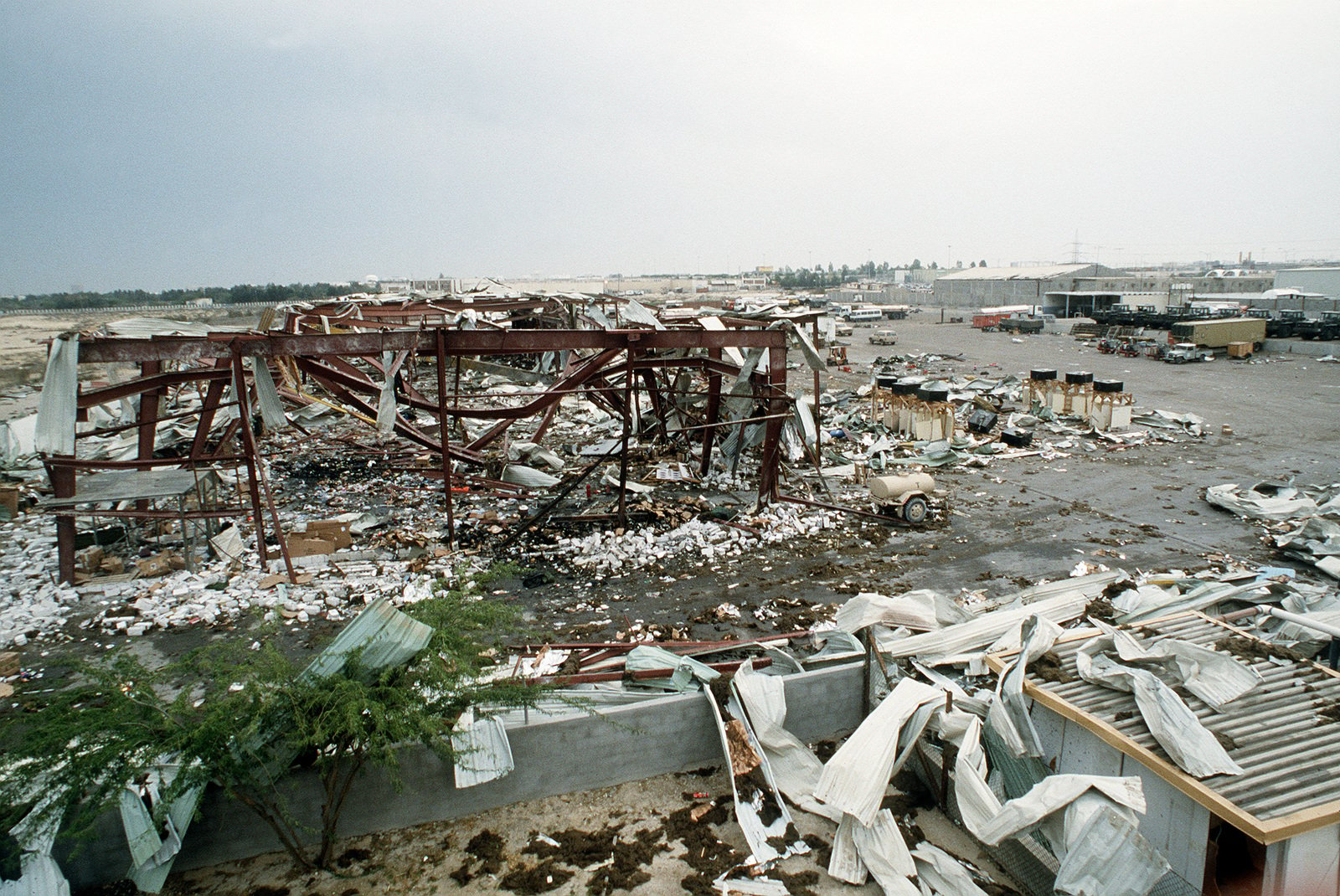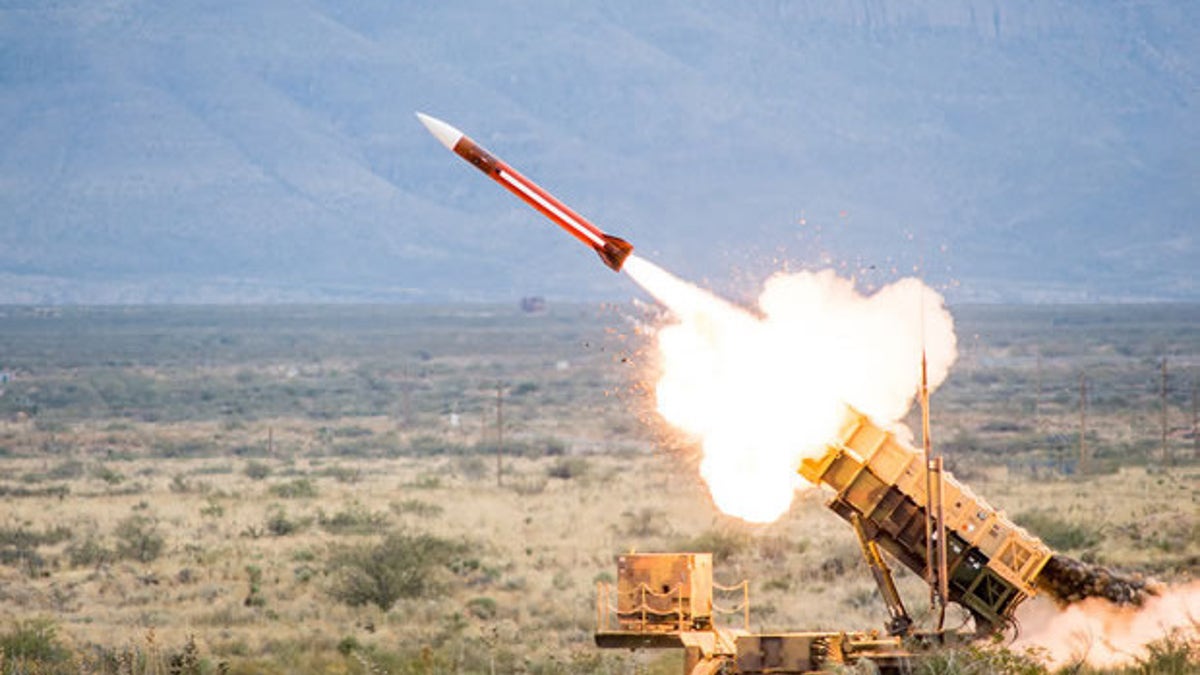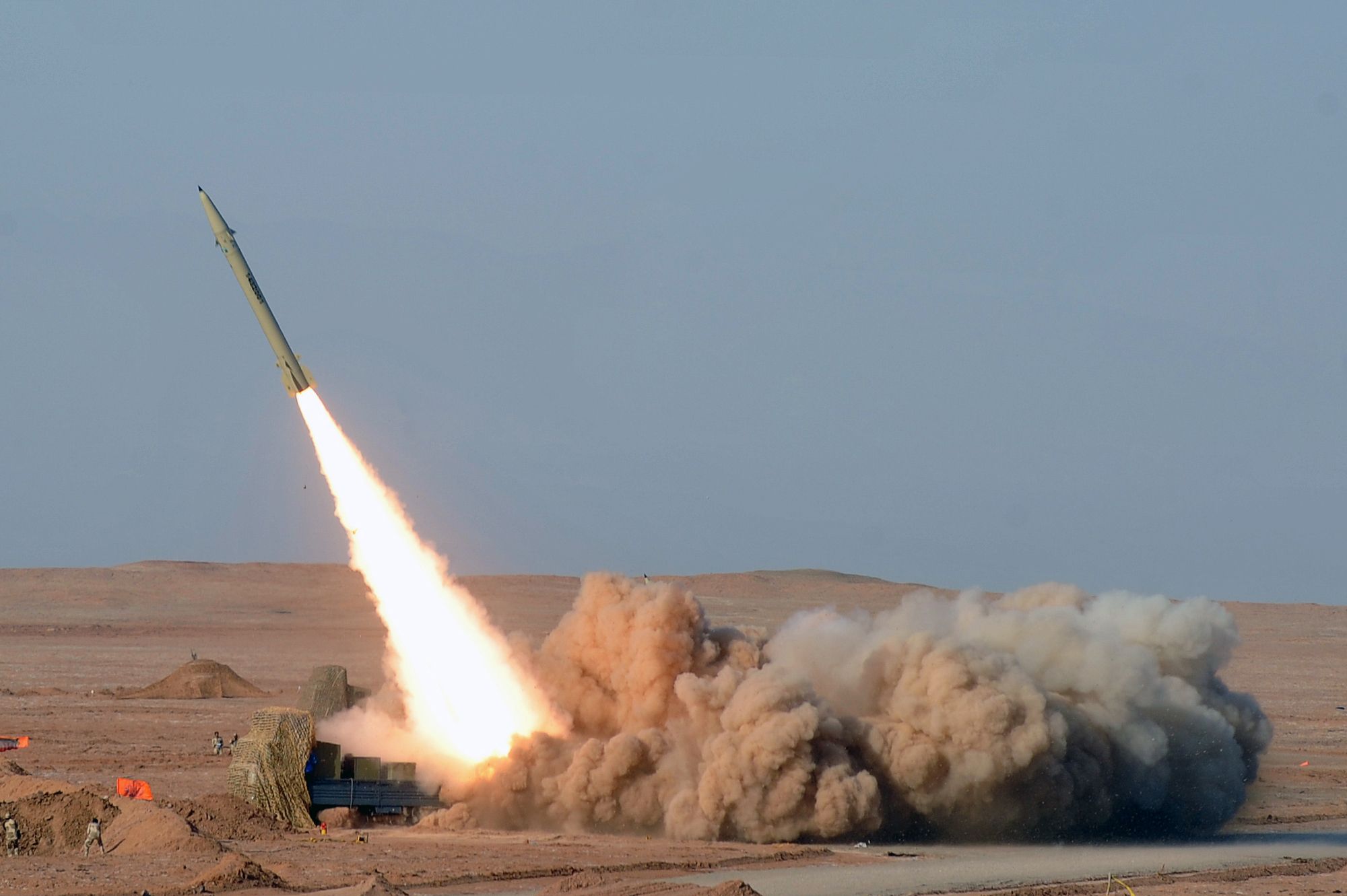Iraqi Scud Missile - Al Hussein or Al-Hussein (Arabic: الحسين) is the name of an Iraqi short-range ballistic missile. This missile is the result of an improved Soviet-made Scud missile for longer range. This weapon was widely used by the Iraqi army during the Iran-Iraq War and the 1991 Gulf War.
Al-Husayn's origins can be traced back to the early stages of the war with Iran. Iraq was the first belligerent country to use long-range artillery rockets during the Iran-Iraq War, dropping a small number of FROG-7s in Tessful and Ahwaz. Iran responded with a Scud-B received from Libya. These missiles are capable of hitting targets up to 185 miles away, so the major Iraqi cities of Sulaymaniyah, Kirkuk and Baghdad are within range of this weapon.
Iraqi Scud Missile

Iraq, where the Scud-B was stationed, could not attack Iran's major industrial centers, including the capital Tehran, more than 300 miles from the border. To counter Iran's superiority, Iraqi engineers developed a plan to upgrade the original Scuds to continuous ballistic missiles with a range of more than 500 miles. Adjacent to Daji was an assembly hall.
The Legality Of Use Of Ballistic Missiles On Cities: The Case Of Armenia Azerbaijan Armed Conflict
The first development, named Al-Hussein, with a range of 400 miles, allowed the Iraqi military to strike deep into Iranian territory. In 1728, the Iraqis initiated a project to manufacture and produce indigenous scotch gin.
The original 945 kg warhead was reduced to 500 kg and the range was extended by increasing engine power. Despite its chemical, biological and nuclear capabilities, the battleship carried HE. By 1991, the Iraqis had captured all key components of the system, according to a report by UN inspectors.
Al-Hussein is 12.46 meters long and 0.88 meters in diameter. The browser was inactive without a terminal phase. The engine's burn height is 31 mph, with a maximum or peak of 94 mph. The accuracy of the impact, or the probability of circular error, was calculated for a radius of 1000 meters, and the launch weight of the missile was 6400 kg.
The rocket fuel was common to all Cold War tactical missiles: a kerosene mixture ignited by the oxidation of nitric acid, IRFNA. Each rocket carried 4,500 kg of liquid fuel consisting of 22% kerosene and 78% IRFNA.
Israeli Soldier Sat Before Building Wreckage Haber Amaçlı Stok Fotoğrafı
The Iraqis extended the 11-gun Soviet-made MAZ-543 truck launchers to accommodate local long-range missiles.
The unit responsible for the maintenance and operation of the new missile was the 224th Brigade, originally formed in 1976 to handle the R-17 Scuds imported from the Soviet Union in 1972.
By 1989, a second squadron, No. 223, known as Al-Nida, was established, with 4 indigenous towed launchers, including the Azimuth Identification System (AzID). There was a second indigenous launcher, the Al-Walid, but it appeared to be inoperative.

Some concrete pits were built west of Arrutba near the Jordanian border. They were precisely bombed by US F-15s in the early hours of Operation Desert Storm.
What Iran's Missile Attack On U.s. Forces In Iraq May Say About The Islamic Republic's Ballistic Capability
Tehran, Qom and Isfahan became regular destinations. Despite their poor accuracy and ineffectiveness in large-scale strategic campaigns, they essentially turned them into weapons of terror, forcing thousands of refugees out of Iran's major cities. This exchange of ballistic missiles actually became known as the "Battle of the Cities". The full campaign lasted from February 29, 1988 to April 20, 1988. Iraq was seen by some sources as the "winner", expecting some kind of conciliatory effort from Iran.
According to Iranian sources, the fuselage and warhead are likely to break into pieces during re-entry into the atmosphere. Phomon later proved to be an advantage as a countermeasure against the Patriot missile during the 1991 Gulf War.
In January and February 1991, 88 of these modified Scuds were fired at Saudi Arabia (46) and Israel (42).
Al-Hussein's greatest tactical success was the destruction of a US military base in Tehran, Saudi Arabia on February 25, 1991 at 8:30 p.m. local time,
An Allied Soldier Draws On An Iraqi Scud Missile That Has Been Shot Down During Operation Desert Storm
One of the units involved in the incident, the 14th Quarter Master Detachment, which specializes in water treatment, was hit hard by American troops stationed in the Persian Gulf, with 81% of its troops killed or wounded.
The Patriot system was unable to track Iraqi missiles over Tehran after more than 100 hours of continuous use without a software reset, caused by a change in the radar range gate.
Of al-Hussein's 46 attacks in Saudi Arabia, only 10 caused significant damage: US military bases (including those in Tehran), two Saudi government buildings, and the remaining seven caused significant damage to civilian objects. A detailed list of these attacks is as follows.

In addition to American troops, Saudi officials said the missile strike killed one security soldier and wounded about 70 civilians.
Unscom 3 (bm1), Destruction Of Scud Missile Warheads, Nabai, Iraq Stock Photo
Of the 42 rockets aimed at Israel, 38 fell within the country's territory; The remaining four fell in the West Coast region.
Although thousands of houses and apartments were damaged by the strike, only two people died outright. Another 12 people died from indirect causes (asphyxiation while wearing gas masks, cardiac arrest).
With the threat of Al-Hussein and other Scud missiles, coalition air forces have directed 40% of their missions to hunt down the missiles with support vehicles and supplies.
In March 1991, the United Nations Security Council Resolution 687 established the Commission for the Elimination of Iraq's Missile Program (UNSCOM). They were only allowed to purchase or manufacture missiles with a range not exceeding 150 km. During the war, the Iraqi government said it had only 61 Al-Hussein and other ballistic missiles in its arsenal. These weapons were destroyed under UNSCOM supervision. This process was completed in July 1991. But Western powers were skeptical that the Iraqi military might have hidden 200 missiles.
R 17 Elbrus (ss 1 Scud B)
The Iraqis used the ceasefire to develop two types of short-range ballistic missiles, the Abibil-100 (also known as Al-Fath) and the Al-Samud, which are still in the testing phase. In 2003, he invaded Iraq. The plans are part of the US administration's case against Saddam Hussein. The gist: Scuds have become the weapon of choice for rogue states and are a precursor to more lethal missiles.
One of the most popular modern missiles, the Scud short-range ballistic missile was developed as a nuclear weapon by Soviet commanders during the Cold War. Today, more than 60 years later, Scutt's DNA, found on a ballistic missile fired from North Korea toward Iran, has spread around the world. As dozens of people have been shot dead during Yemen's civil war, logging has become more common than ever.
The Scud missile is a direct product of captured German missile technology during the war. Soviet testing of the Nazi-developed V-2 rocket led to a decade-long effort. The carrier launcher is not unlike North Korea's Bukuksang-2 tracked launcher. The R-11M can launch conventional high-explosive warheads up to 167 miles and heavy nuclear warheads up to ninety-three miles. The R-11M was eventually nicknamed the "Scud" by NATO, with later versions known as the Scud-A.

The Scud-A's short range made it a tactical nuclear delivery system. The accuracy of the missile was poor, and the range was 1.8 miles, with the possibility of an error in the round, or half of the missile's warhead. This and the rudimentary nature of the initial development of nuclear weapons meant that the Scud was a tactical system, but still equipped with a large warhead capable of twenty one hundred kilotons.
Libya's Scud B Force
The Scud's basic design was redesigned several times during the Cold War. The R-17, also known as the Scud-B, was produced in 1965. The Scud-B was modified to an 8×8 wheeled track-builder launcher, and the nuclear payload range was increased from ninety-three to 167 miles. A new passive guidance system reduced the Model-B's accuracy to 6 miles, and while the new missile was not a "precision-guided weapon," it was still highly accurate at high speeds.
Army analyst Steven Zaloka said the total number of Scuds of all types was about ten thousand, with five to six thousand remaining in 1997. Total launch vehicle production was estimated at eight hundred. The Scud has ended production and is no longer in service with the Russian Army.
The end of the Cold War did not end the Scud. The missiles were first used in conflict during the Iran-Iraq war, when Iranian Scuds purchased from Libya were used against Iraqi cities. Iraq, unable to hit remote Iranian cities with its own Scud, has begun a program to develop long-range missiles. It resulted
Scud, iraqi scud missile launcher, scud b missile, scud missile, scud d missile, define scud missile, scud missile acronym, scud missile price, scud missile meaning, scud missile cost, scud missile launch, scud c missile

0 Comments